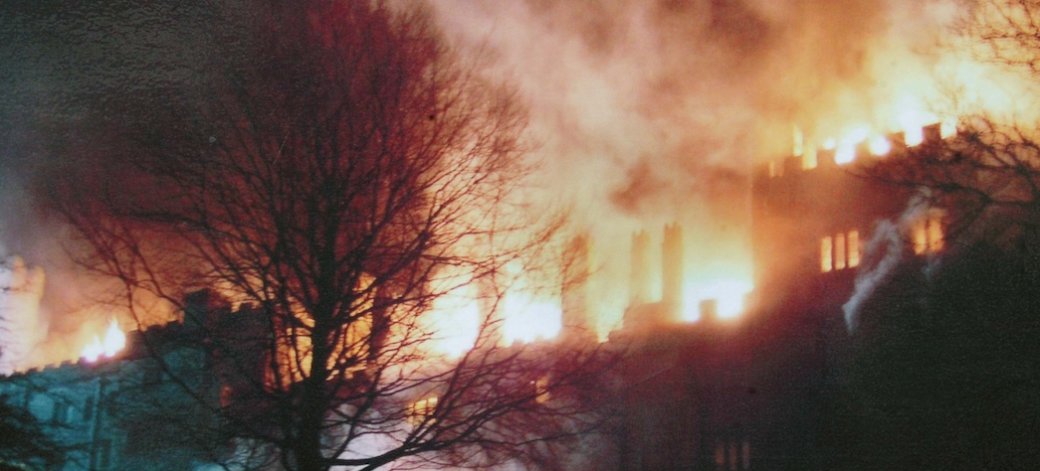“Oh the miserable and calamitous spectacle!” wrote John Evelyn in 1666. “…London was, but is no more”. The story of the Great Fire of London in 1666, a staple of the primary curriculum, is a glimpse of history that colours our early schooling. And this week we know why it’s still important. As the horror footage of the burning Grenfell Tower dominates our screens, these images of despair and destruction are likely to be live long in all our memories too.
As we’ve witnessed these past few days, fire is a terrifying weapon of destruction; it’s quick, it’s absolute, it’s deadly.
And it kills more people every year than any other force of nature.
We know this, we are no strangers to big fires; from nightclubs to bushfires they happen globally every year; and then here, in the UK, we’ve had head-lining ones; Kings Cross Station (1987) and the Buncefield oil depot (2005), and heritage-destroying ones; Windsor Castle (1992), Saatchi Warehouse (2004), Glasgow School of Art (2014), but every time it happens it shocks and surprises us.
But that’s probably because in our modern, techno-whizzy age we’ve forgotten where we’ve come from. Language and fire; are the reasons we exist according to Charles Darwin. Primitive tribes developed fires for warmth, and cooking and social contact (the reason according to Greek mythology that Prometheus stole fire from Zeus to give to the people – for which he was severely punished every day, by an eagle pecking out his liver). So crucial though was it considered for survival, our ancestors traveled through tropical forests hoarding the precious embers of old fires. When they settled the barren Arctic, they took with them the memory of fire, and recreated it in stoneware vessels filled with animal fat. All this paving the way, over millennia, to 21st century homes with hearths and ovens and lights.

Fire and sustenance bought us one of man’s earliest creative inventions too; ceramics and pottery; stoneware, earthenware and porcelain. The Venus of Dolní Věstonice figurine, discovered in the Czech Republic, dating back to c.25,000 BC, and pottery vessels discovered in Jiangxi, China, from 18,000 BC tell us this. However it was during the Neolithic Age, that the creation and use of pottery became far more widespread and artistic. Simple items with linear designs and geometric shapes. All transformed from mud or clay in a deep pit-fire kiln.

Another age-old emblem of fire; the phoenix which (again according to Greek mythology) was a unique bird who lived long, then burned in a funeral pyre (spiced with incense) to be regenerated. A symbol of renewal and hope (and for the Romans immortality).
The phoenix is still used today, in various forms; as a symbol of regneration (towns, like Coventry rebuilt after the 2WW) and recycling (Chinese artist Xu Bing’s 12 ton phoenix sculptures, made from salvaged debris).

Ideas of resurrection also inspired the restoration project, Ash to Art, set up after fire ravaged the Glasgow School of Art in 2014. 25 world-famous artists were given a piece of charcoal salvaged from the Mackintosh Building to create new works of art. Grayson Perry, Sir Antony Gormley, Sir Peter Blake, Anish Kapoor, Jenny Saville, David Shrigley and 19 others took part. The subsequent auction by Christies, of their work, raised £700,000 towards the renovations.
So fire creates and takes away.
Which is why it’s associated with passion, dominance, assertiveness and transistion.
And sayings like; a baptism by fire, play with fire, fired up, hang fire, in the line of fire, get on like a house on fire, keep the homes fires burning, set the world on fire…
But our stories of fire usually come in one of three ways;
To explore fear: (a dramatic device used in blockbuster disaster films to small-scale documentaries)
https://zeitgeistfilms.com/film/letthefireburn
As a cleansing; (a useful device in many fictional and TV soap plotlines)

Or contemplation; (and dramatic prop in many a music performance)

The snap and crackle memorizing effects of fire has been the subject of much academic research, particularly on adolescent brains. What turns a teenager curious about a dancing flame (what kid hasn’t enjoyed playing with a match) to a fire-starting delinquent (the twisted firestarter…once eulogised by The Prodigy) is likely to be a toxic mix of hormones, rebelliousness and anxiety.
Which goes on to explain why fire-throwing is often an expression of youthful/political discontent. (see the 2011 London riots)

Fire may fascinate and seduce us; nurture us with warmth and food, symbolise cleansing and renewal but it’s a truly fickle thing with an nasty side; it can scorch and scar, devastate and denigrate; destroy our things, our homes, our communities; take away our loved ones.
The story of the Grenfell Tower is too early to tell. But we know from the tears and anger this is one we will need to hear. It will be in the telling of the losses, the social divisions, the destruction, the grief that this fire story will show us, us and the mistakes we make. It will change us. It will have to.
To Watch:
Stephen Pyne – What Fire does?
To Read:
To Listen:









